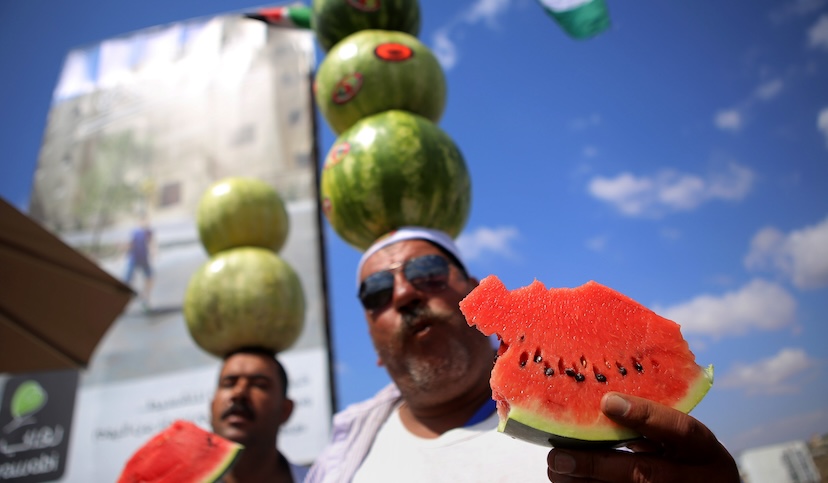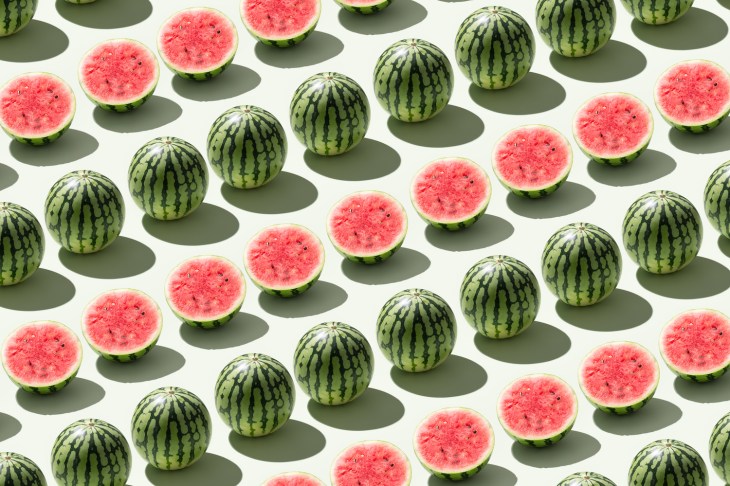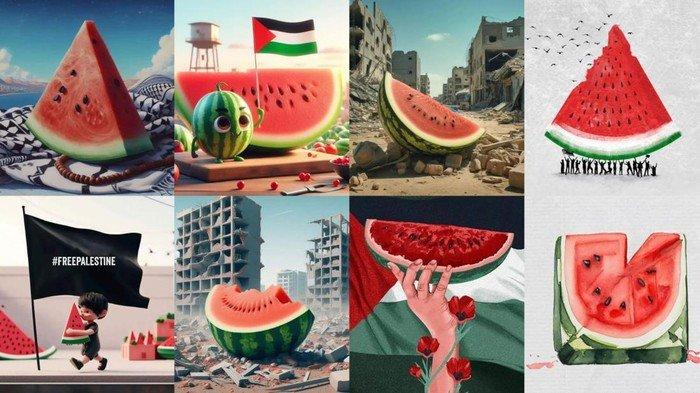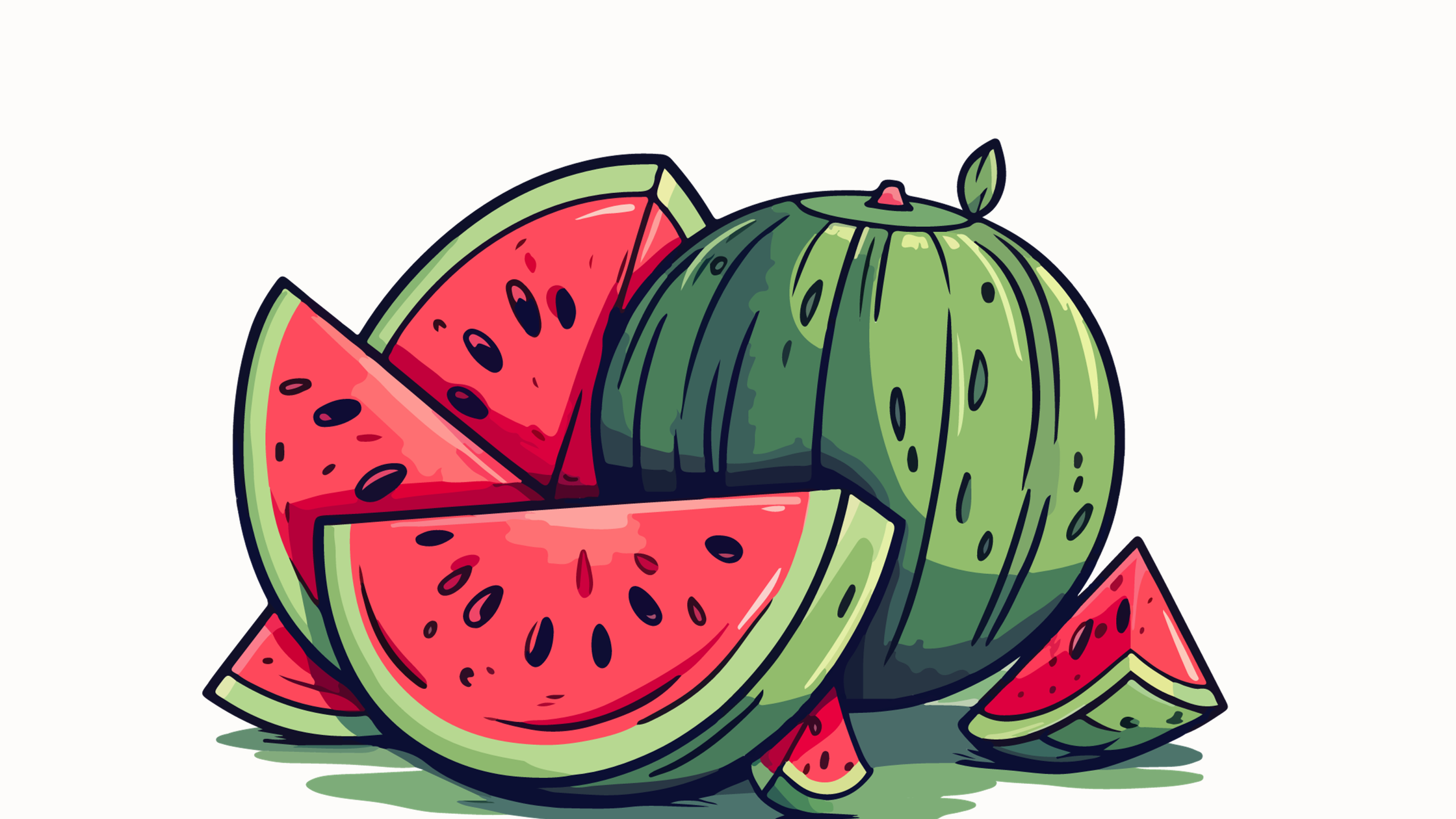Whether plastered across social media in emoji form, depicted in Palestinian art, or held in hand by the people of Gaza themselves, the watermelon holds a significant place as an emblem of Palestinian resilience and resistance.
But how did this sweet, refreshing fruit become a symbolic sign of solidarity against relentless oppression?

Consider the stark reality: over 20,000 Palestinians, including more than 4,000 children, have been killed in the wake of Israeli airstrikes. In response, both the streets and digital landscapes have become platforms for protest and calls for justice.
The transformation of the watermelon into an 'icon of defiance' is deeply intertwined with the Palestinian struggle for freedom.
Interestingly, the public display of the Palestinian flag was long prohibited in areas like Gaza and the West Bank, as it was seen as a direct attack on cultural and national identity.
But, amidst civilian arrests and the online censorship of Palestinians, the watermelon emerged as the silent symbol of resistance for them.
Its colours – red, black, white, and green – reflect those of the Palestinian flag, making it a covert yet potent sign of resistance against the Israeli occupation.
Over time, this fruit's symbolic value has transcended local boundaries, gaining recognition as a global icon of strength with the Palestinian cause.
A Slice of Sweet Silence: The Watermelon's Silent Rebellion
In the aftermath of the Six-Day War and the onset of the occupation of the West Bank and Gaza Strip, the Israeli military imposed restrictions on any form of political demonstrations or gatherings.

These measures muzzled the voice of the Palestinian people, forbidding even the mere act of waving their flag without explicit permission from the military commander.
Even uttering slogans of resistance against the occupation was deemed illegal.
The year 1980 marked a pivotal moment in the quiet yet defiant resistance of the Palestinian people. During an art exhibition in Ramallah, Palestinian artist Sliman Mansour was arrested for his use of the Palestinian flag's colors in his artwork, as even the colors red, white, black, and green had fallen under prohibition.
In this climate of censorship, the watermelon emerged as an unspoken symbol for the oppressed. Its vibrant hues, mirroring the national colors of Palestine, became a canvas for silent protest.
This inspired countless artists to depict it in their work, painting a story of resilience, endurance, and unyielding spirit of a people facing overwhelming adversity. 🍉
Through these visual expressions, the watermelon transcended its role as a mere fruit, becoming an emblem of a silent yet powerful resistance, echoing the unspoken narratives of the Palestinian struggle for identity and freedom.
The Watermelon in Modern World
In today's era, where social media bridges us all and connects millions, the symbolism of the watermelon has gone beyond its origins, becoming a global emblem of justice and peace.
From its quiet beginnings as a subtle form of protest in Gaza, the watermelon icon is now a worldwide call to end the occupation, echoing through the feeds and stories of people everywhere.
Today, the watermelon stands as a reminder of the obvious ignorance of the Western world, the ruthless politics failing the Palestinians, and the heart-wrenching plight of families who have lost their entire families in this genocide.

The next time you see or hold a watermelon, we urge you to think of the endless oppression taking place, and feel more motivated than ever to keep raising awareness.



Member discussion